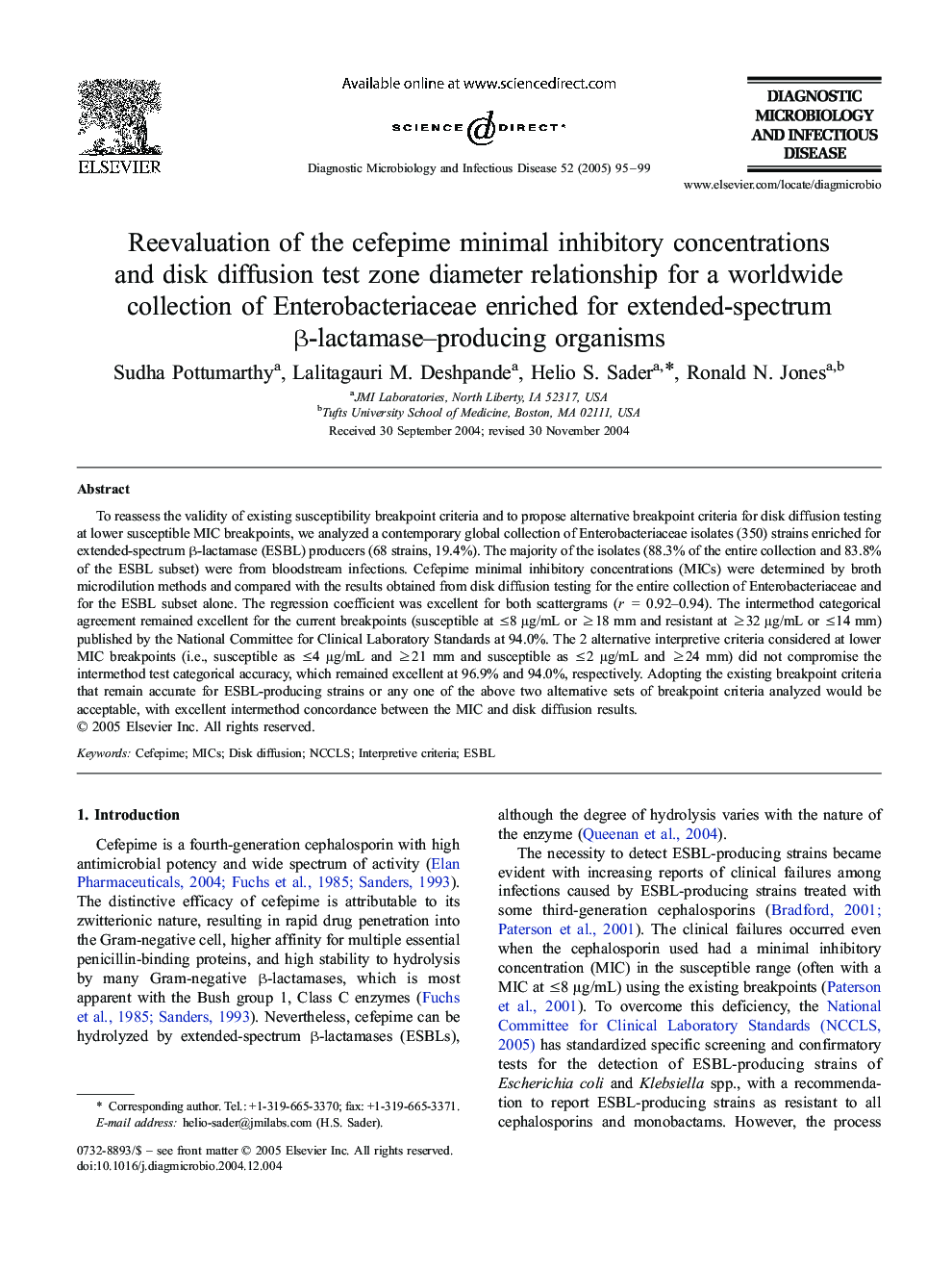| Article ID | Journal | Published Year | Pages | File Type |
|---|---|---|---|---|
| 9263282 | Diagnostic Microbiology and Infectious Disease | 2005 | 5 Pages |
Abstract
To reassess the validity of existing susceptibility breakpoint criteria and to propose alternative breakpoint criteria for disk diffusion testing at lower susceptible MIC breakpoints, we analyzed a contemporary global collection of Enterobacteriaceae isolates (350) strains enriched for extended-spectrum β-lactamase (ESBL) producers (68 strains, 19.4%). The majority of the isolates (88.3% of the entire collection and 83.8% of the ESBL subset) were from bloodstream infections. Cefepime minimal inhibitory concentrations (MICs) were determined by broth microdilution methods and compared with the results obtained from disk diffusion testing for the entire collection of Enterobacteriaceae and for the ESBL subset alone. The regression coefficient was excellent for both scattergrams (r = 0.92-0.94). The intermethod categorical agreement remained excellent for the current breakpoints (susceptible at â¤8 μg/mL or â¥18 mm and resistant at â¥32 μg/mL or â¤14 mm) published by the National Committee for Clinical Laboratory Standards at 94.0%. The 2 alternative interpretive criteria considered at lower MIC breakpoints (i.e., susceptible as â¤4 μg/mL and â¥21 mm and susceptible as â¤2 μg/mL and â¥24 mm) did not compromise the intermethod test categorical accuracy, which remained excellent at 96.9% and 94.0%, respectively. Adopting the existing breakpoint criteria that remain accurate for ESBL-producing strains or any one of the above two alternative sets of breakpoint criteria analyzed would be acceptable, with excellent intermethod concordance between the MIC and disk diffusion results.
Keywords
Related Topics
Life Sciences
Immunology and Microbiology
Applied Microbiology and Biotechnology
Authors
Sudha Pottumarthy, Lalitagauri M. Deshpande, Helio S. Sader, Ronald N. Jones,
